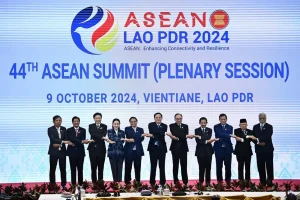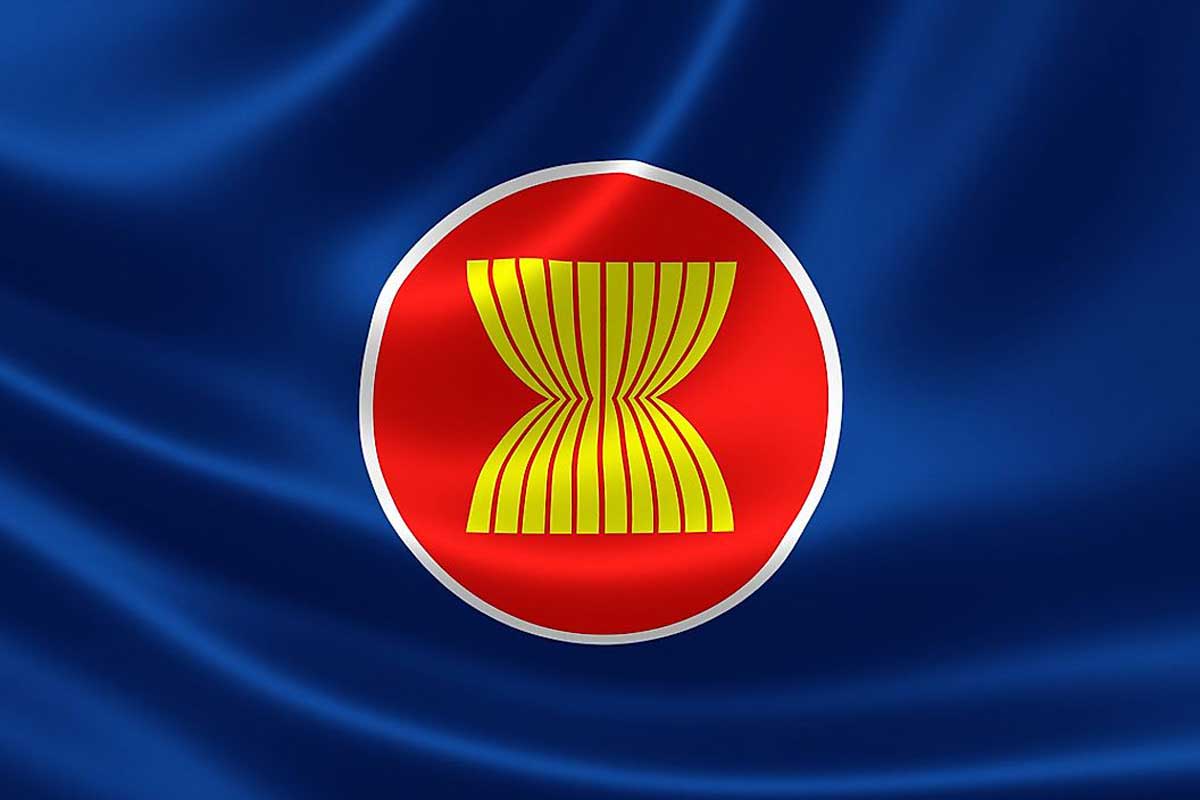
By Dr. Hayam Qayyoum
ASEAN, the Association of Southeast Asian Nations, was established on 8th August 1967 in Bangkok by signing the ASEAN declaration among five countries: Indonesia, Malaysia, the Philippines, Singapore, and Thailand. More countries showed interest and became members later including Brunei Darussalam (1984), Vietnam (1995), Lao PDR and Myanmar (1997), Cambodia (1999), and Timor-Leste (2022, not a full member), with a collective GDP of over USD 4.5 trillion (ASEANstats, 2024) playing major role in regional trade, diplomacy, and security cooperation.
UN-China strain and India’s recent inclination towards China, navigating climate issues, and strategizing supply chain renewals, also setting technological boundaries. These strains provide leverage to ASEAN to take a central economic and normative position through partnerships and agreements among members, like, Regional Comprehensive Economic Partnership, the Comprehensive and Progressive Agreement for Trans-Pacific Partnership, and the prospective ASEAN Digital Economy Framework Agreement. On the other hand, ASEAN’s outlook on the Indo-Pacific (ASEAN, 2019) seems to be hard to sustain its agenda to materialize the trade agreement, where China protracted disputes over the South China Sea, and the other is Myanmar’s chaos.
According to the Asian Bank 2023, ASEAN is committed to mega agreements for consensus on various projects, concentrated on transparency, international laws, and inclusivity. According to the U.S. Mission to ASEAN, 2024, the parallel alliance Quad and AUKUS witness the collaboration, but the situation will be out of control if the rule of the coalition is violated. China was calmed down temporarily. According to Reuters (2025), China is using a “grey zone” tactic by jamming signals, deliberate vessel collision, and drone attacks near Second Thomas Shoal and Scarborough Shoal. ASEAN centrality seems to be jeopardized by the Philippines-Japan Reciprocal Access Agreement as well.
ASEAN Secretariat (2023) quoted that the triangular trade involving non-members will enhance quadrilateral trade, revamp rules, and reduce tariffs due to the RCEP and UK coalition, functional from December 2024. Whilst attracting China-plus-one supply chains in Vietnam, Malaysia, and Indonesia to shift their production to other destinations. Dependency will be balanced by ASEAN’s DEFA for cross-border data flow, E-transactions, production, and cybersecurity projects, strengthening ASEAN members, too.
Gedeth Network, in 2024, analyzed that the other most significant role played by the manufacturers, for instance, Malaysia, is focusing on semiconductors, Vietnam is producing home appliances and consumer items, and Indonesia is manufacturing EV batteries, while facing unrealistic mineral policies and import-export regulations that need urgent attention. ASEAN is facing severe climate change calamities, a lack of infrastructure to control natural disasters, and underperformance of member countries due to short of funds, internal disputes, and Myanmar’s crisis.
What’s in it for Pakistan?
ASEAN is associated with Pakistan, geoeconomically and geo-strategically, informally through ARF (ASEAN Regional Forum). The significant roles are regional connectivity, diplomacy, power, energy utilization, foreign investment, and trade. The ASEAN-Pakistan partnership gives leverage to the Gwadar port linking CPEC to the ASEAN master plan of connectivity to central and western Asia. As reported by UNESCO in 2024, the other benefit is that Pakistan can work on clean energy projects with ASEAN members like Malaysia and Indonesia.
Pakistan can collaborate in student and faculty exchange programs, exchange of culture, business-to-business meetings, and attract tourists from and to Malaysia, Thailand, and Brunei. ARF opens doors for foreign investors in Pakistan and business delegations to visit ASEAN members to improve the trade balance, regional stability, and compete with India. To maintain the balance of trade, Pakistan places business, cultural, and education desks in embassies operating in Pakistan, especially for women entrepreneurs.
Registered companies’ data can be requested from the Chamber of Commerce and Industry, and invitations can be sent to every member to meet the foreign businessman/woman, embassy facilitators, and delegates. These businesses, education, and cultural desks can be placed in all ASEAN countries. The linkages, dialogue, and connectivity forums can play a major role in ensuring security and enhancing trade, technology, and tourism among ASEAN members and Pakistan.
There are three key areas in which ASEAN members and Pakistan can grow and excel in the world. Firstly, continue strategic dialogue with China and India, to cut down the Grey-Zone tactics for smooth trade and all ports’ connectivity.
Secondly, the setback of the South China Sea conflict has led to sanctions and a reduced supply chain. If this situation persists, it will lead to disaster and provoke more clashes. Therefore, dialogue between stakeholders to safeguard trade and the interests of countries’ coasts will provide security and build trust in the region.
Lastly, optimism is required for climate-tech industries to reach digital agreements for the smooth flow of trade, supply, allocation of human resources, artificial resources, digitalization, and climate change control strategies among ASEAN members and Pakistan. Because Pakistan is facing severe climate change aftermaths.
( The author is : Snr. Assistant Professor, Department of Media Studies, Bahria University, Islamabad. Can be reached at: [email protected] )


